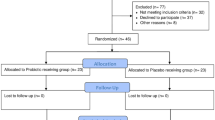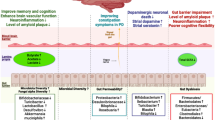Abstract
Selenium is an essential trace element for human health, playing a key role in regulating cellular oxidative stress, immune response, and inflammation. In recent years, the association between selenium and Parkinson's disease (PD) has aroused people's attention. The objective of this study is to investigate the relationship between blood selenium concentrations and PD risk in a sample of U.S. adults. A cross-sectional study was conducted using the National Health and Nutrition Examination Survey (NHANES) data from 2011–2020 and included 15,660 adults aged over 40 years old. Univariate logistic regression and multivariate logistic regression models were utilized to analyze the association between blood selenium concentrations and PD prevalence. Additionally, the restricted cubic spline (RCS) model was applied to investigate the dose–response relationships between blood selenium and PD. The findings indicated a link between elevated blood selenium levels and a reduced occurrence of Parkinson's disease (PD). Notably, this association between blood selenium and PD exhibited a non-linear pattern, wherein the decline in PD risk was more pronounced at higher selenium concentrations than at lower levels. An inflection point emerged at approximately 2.4 μmol/L, beyond which the rate of decline in risk significantly diminished with increasing selenium levels. A potential association between blood selenium concentrations and PD has been observed, with PD patients having lower blood selenium levels compared to non-PD patients. Higher levels of blood selenium may have a protective effect against PD. However, further prospective studies are needed to investigate the effect of blood selenium in PD patients and to determine causality.


Similar content being viewed by others
Data availability
Publicly available datasets were analyzed in this study. This data can be found here: https://www.cdc.gov/nchs/nhanes/index.htm.
Abbreviations
- NHANES :
-
National Health and Nutrition Examination Survey
- PD :
-
Parkinson’s disease
- U.S :
-
United States
- RCS :
-
Restricted cubic spline
- BMI :
-
Body mass index
- SD :
-
Standard deviation
- SE :
-
Standard error
- CI :
-
Confidence interval
- OR :
-
Odds ratio
- WHO :
-
World Health Organization
References
Aguilar MV, Jiménez-Jiménez FJ, Molina JA et al (1998) Cerebrospinal fluid selenium and chromium levels in patients with Parkinson’s disease. J Neural Transm (vienna) 105:1245–1251. https://doi.org/10.1007/s007020050127
Ahmed SS, Santosh W (2010) Metallomic profiling and linkage map analysis of early Parkinson’s disease: a new insight to aluminum marker for the possible diagnosis. PLoS One 5:e11252. https://doi.org/10.1371/journal.pone.0011252
Arnaud S, Mouchiroud G, Blanchet JP (1988) Erythroid colony formation by human CFU-E is stimulated by compatible human serum but impaired by blood group antibodies. Eur J Haematol 40:256–261. https://doi.org/10.1111/j.1600-0609.1988.tb00833.x
Bock MA, Brown EG, Zhang L, Tanner C (2022) Association of Motor and Nonmotor Symptoms With Health-Related Quality of Life in a Large Online Cohort of People With Parkinson Disease. Neurology 98:e2194–e2203. https://doi.org/10.1212/WNL.0000000000200113
Chen J, Berry MJ (2003) Selenium and selenoproteins in the brain and brain diseases. J Neurochem 86:1–12. https://doi.org/10.1046/j.1471-4159.2003.01854.x
Chen JJ (2010) Parkinson’s disease: health-related quality of life, economic cost, and implications of early treatment. Am J Manag Care 16 Suppl Implications:S87–93
Choi HY, Mai TH, Kim KA et al (2020) Association between viral hepatitis infection and Parkinson’s disease: A population-based prospective study. J Viral Hepat 27:1171–1178. https://doi.org/10.1111/jvh.13346
Dai X, Zhou G, Xu L (2022) Associations between red blood cell count and metabolic dysfunction-associated fatty liver disease(MAFLD). PLoS One 17:e0279274. https://doi.org/10.1371/journal.pone.0279274
DeMarco EC, Al-Hammadi N, Hinyard L (2021) Exploring Treatment for Depression in Parkinson's Patients: A Cross-Sectional Analysis. Int J Environ Res Public Health 18. https://doi.org/10.3390/ijerph18168596
Galan-Chilet I, Tellez-Plaza M, Guallar E et al (2014) Plasma selenium levels and oxidative stress biomarkers: a gene-environment interaction population-based study. Free Radic Biol Med 74:229–236. https://doi.org/10.1016/j.freeradbiomed.2014.07.005
Gellein K, Syversen T, Steinnes E et al (2008) Trace elements in serum from patients with Parkinson’s disease–a prospective case-control study: the Nord-Trøndelag Health Study (HUNT). Brain Res 1219:111–115. https://doi.org/10.1016/j.brainres.2008.05.002
Goldhaber SB (2003) Trace element risk assessment: essentiality vs. toxicity. Regul Toxicol Pharmacol 38:232–242. https://doi.org/10.1016/s0273-2300(02)00020-x
Gong R, Pu X, Cheng Z et al (2022) The association between serum cadmium and diabetes in the general population: A cross-sectional study from NHANES (1999–2020). Front Nutr 9:966500. https://doi.org/10.3389/fnut.2022.966500
Hauser DN, Dukes AA, Mortimer AD, Hastings TG (2013) Dopamine quinone modifies and decreases the abundance of the mitochondrial selenoprotein glutathione peroxidase 4. Free Radic Biol Med 65:419–427. https://doi.org/10.1016/j.freeradbiomed.2013.06.030
Hossain A, Skalicky M, Brestic M et al (2021) Selenium Biofortification: Roles, Mechanisms, Responses and Prospects. Molecules 26. https://doi.org/10.3390/molecules26040881
Houtkooper RH, Vaz FM (2008) Cardiolipin, the heart of mitochondrial metabolism. Cell Mol Life Sci 65:2493–2506. https://doi.org/10.1007/s00018-008-8030-5
Huang Z (2022) Association Between Blood Lead Level With High Blood Pressure in US (NHANES 1999–2018). Front Public Health 10:836357. https://doi.org/10.3389/fpubh.2022.836357
Khan HA (2010) Selenium partially reverses the depletion of striatal dopamine and its metabolites in MPTP-treated C57BL mice. Neurochem Int 57:489–491. https://doi.org/10.1016/j.neuint.2010.06.020
Kim H, Jhoo W, Shin E, Bing G (2000) Selenium deficiency potentiates methamphetamine-induced nigral neuronal loss; comparison with MPTP model. Brain Res 862:247–252. https://doi.org/10.1016/s0006-8993(00)02085-0
Li Y, Cao Z (2002) The neuroprotectant ebselen inhibits oxidative DNA damage induced by dopamine in the presence of copper ions. Neurosci Lett 330:69–73. https://doi.org/10.1016/s0304-3940(02)00444-5
Millán Adame E, Florea D, Sáez Pérez L et al (2012) Deficient selenium status of a healthy adult Spanish population. Nutr Hosp 27:524–528. https://doi.org/10.1590/S0212-16112012000200026
Monsen ER (2000) Dietary reference intakes for the antioxidant nutrients: vitamin C, vitamin E, selenium, and carotenoids. J Am Diet Assoc 100:637–640. https://doi.org/10.1016/S0002-8223(00)00189-9
Moussaoui S, Obinu MC, Daniel N et al (2000) The antioxidant ebselen prevents neurotoxicity and clinical symptoms in a primate model of Parkinson’s disease. Exp Neurol 166:235–245. https://doi.org/10.1006/exnr.2000.7516
Navarro-Alarcon M, Cabrera-Vique C (2008) Selenium in food and the human body: a review. Sci Total Environ 400:115–141. https://doi.org/10.1016/j.scitotenv.2008.06.024
Nikam S, Nikam P, Ahaley SK, Sontakke AV (2009) Oxidative stress in Parkinson’s disease. Indian J Clin Biochem 24:98–101. https://doi.org/10.1007/s12291-009-0017-y
Novoselov SV, Kim HY, Hua D et al (2010) Regulation of selenoproteins and methionine sulfoxide reductases A and B1 by age, calorie restriction, and dietary selenium in mice. Antioxid Redox Signal 12:829–838. https://doi.org/10.1089/ars.2009.2895
Post M, Lubiński W, Lubiński J et al (2018) Serum selenium levels are associated with age-related cataract. Ann Agric Environ Med 25:443–448. https://doi.org/10.26444/aaem/90886
Power JH, Blumbergs PC (2009) Cellular glutathione peroxidase in human brain: cellular distribution, and its potential role in the degradation of Lewy bodies in Parkinson’s disease and dementia with Lewy bodies. Acta Neuropathol 117:63–73. https://doi.org/10.1007/s00401-008-0438-3
Qureshi GA, Qureshi AA, Memon SA, Parvez SH (2006) Impact of selenium, iron, copper and zinc in on/off Parkinson's patients on L-dopa therapy. J Neural Transm Suppl 229–236. https://doi.org/10.1007/978-3-211-33328-0_24
Raj K, Kaur P, Gupta GD, Singh S (2021) Metals associated neurodegeneration in Parkinson’s disease: Insight to physiological, pathological mechanisms and management. Neurosci Lett 753:135873. https://doi.org/10.1016/j.neulet.2021.135873
Ramos P, Santos A, Pinto NR et al (2015) Anatomical regional differences in selenium levels in the human brain. Biol Trace Elem Res 163:89–96. https://doi.org/10.1007/s12011-014-0160-z
Schweizer U, Fradejas-Villar N (2016) Why 21? The significance of selenoproteins for human health revealed by inborn errors of metabolism. FASEB J 30:3669–3681. https://doi.org/10.1096/fj.201600424
Solovyev ND (2015) Importance of selenium and selenoprotein for brain function: From antioxidant protection to neuronal signalling. J Inorg Biochem 153:1–12. https://doi.org/10.1016/j.jinorgbio.2015.09.003
Stranges S, Laclaustra M, Ji C et al (2010) Higher selenium status is associated with adverse blood lipid profile in British adults. J Nutr 140:81–87. https://doi.org/10.3945/jn.109.111252
Zhang YJ, Sun HL, Wang T et al (2021) Selenium level does not differ in blood but increased in cerebrospinal fluid in Parkinson’s disease: a meta-analysis. Int J Neurosci 131:95–101. https://doi.org/10.1080/00207454.2020.1733557
Zhao HW, Lin J, Wang XB et al (2013) Assessing plasma levels of selenium, copper, iron and zinc in patients of Parkinson’s disease. PLoS One 8:e83060. https://doi.org/10.1371/journal.pone.0083060
Acknowledgements
The author thanks the staff and the participants of the NHANES study for their valuable contributions.
Funding
This work was supported by Science and Technology Planning Project of Shenzhen Municipality (KCXFZ20201221173605013).
Author information
Authors and Affiliations
Contributions
All authors contributed to the study conception and design. Material preparation, data collection and analysis were performed by Zhaohao Zeng. The first draft of the manuscript was written by Yanmei Cen and Zhaohao Zeng. Supervision, Editing and Funding acquisitionand were performed by Xiaoguang Luo. And all authors commented on previous versions of the manuscript. All authors read and approved the final manuscript.
Corresponding author
Ethics declarations
Ethics approval and consent to participate
The data used in this study were obtained from the NHANES, conducted by the National Center for Health Statistics (NCHS) with appropriate ethical approval. The studies involving human participants were reviewed and approved by NCHS and the Research Ethics Review Board (ERB). Written informed consent for participation was not required for this study following the national legislation and the institutional requirements.
Consent for publication
Not applicable.
Conflict of interest
The authors have no relevant financial or non-financial interests to disclose.
Additional information
Responsible Editor: Lotfi Aleya
Publisher's note
Springer Nature remains neutral with regard to jurisdictional claims in published maps and institutional affiliations.
Highlights
• Four different statistical models were utilized to examine the association between blood selenium and PD and demonstrate evidence of negative linear associations from different perspectives.
• RCS models were constructed and showed a nonlinear relationship between PD and blood selenium.
• Subgroup analyses to further analyze the study results and identify any special subgroups in our survey.
• High levels of blood selenium may have a protective effect against PD.
Rights and permissions
Springer Nature or its licensor (e.g. a society or other partner) holds exclusive rights to this article under a publishing agreement with the author(s) or other rightsholder(s); author self-archiving of the accepted manuscript version of this article is solely governed by the terms of such publishing agreement and applicable law.
About this article
Cite this article
Zeng, Z., Cen, Y. & Luo, X. Association between blood selenium with parkinson’s disease in the US (NHANES 2011–2020). Environ Sci Pollut Res 30, 117349–117359 (2023). https://doi.org/10.1007/s11356-023-30337-7
Received:
Accepted:
Published:
Issue Date:
DOI: https://doi.org/10.1007/s11356-023-30337-7




